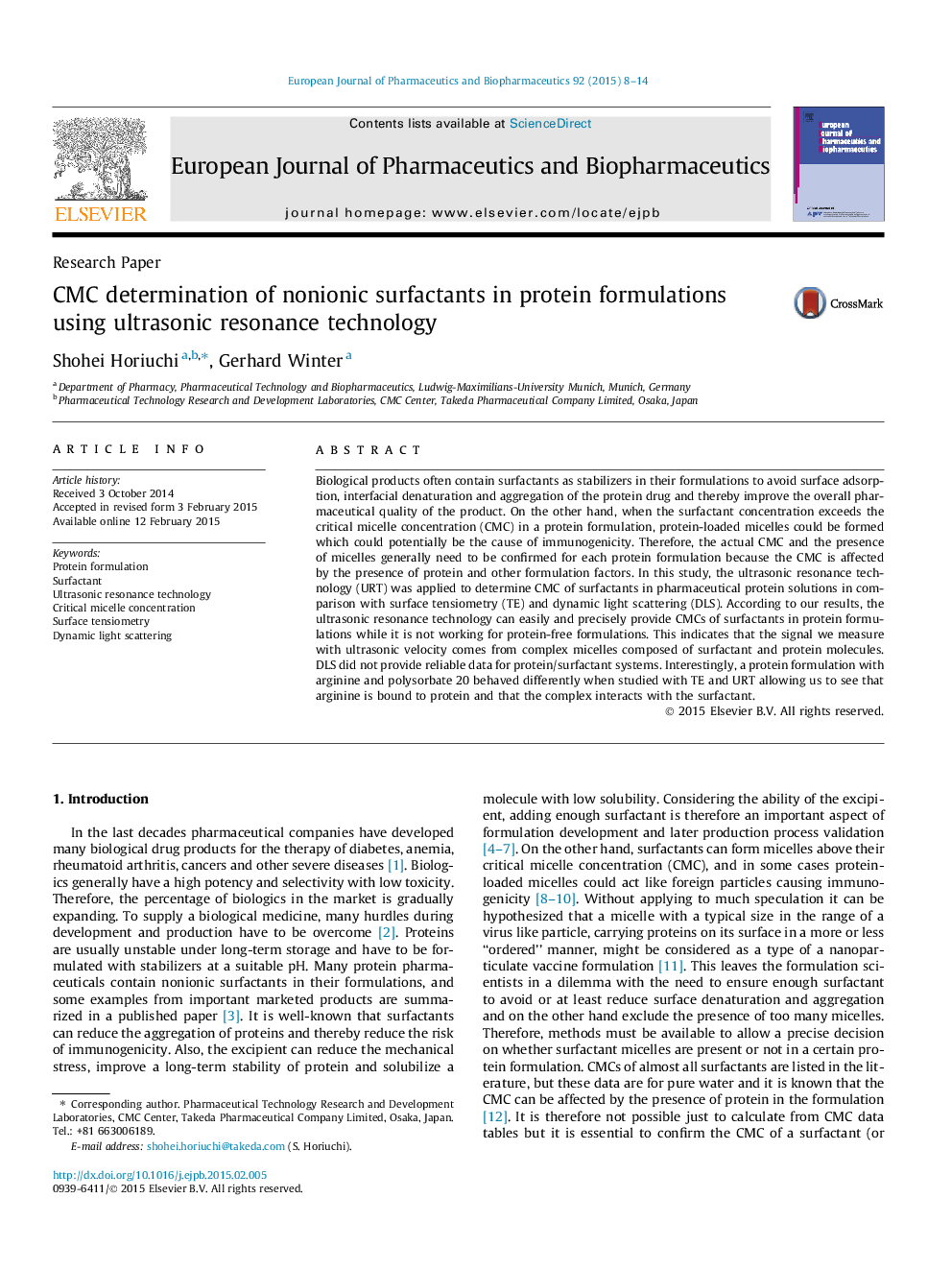| کد مقاله | کد نشریه | سال انتشار | مقاله انگلیسی | نسخه تمام متن |
|---|---|---|---|---|
| 2083330 | 1545333 | 2015 | 7 صفحه PDF | دانلود رایگان |

• The ultrasonic resonance technology was applied to determine CMC of surfactants.
• It could easily and precisely provide CMCs of surfactants in protein formulations.
• Arginine would bind to protein in a formulation with arginine and polysorbate 20.
• The true, specific CMC in a new protein formulation needs to be taken care.
Biological products often contain surfactants as stabilizers in their formulations to avoid surface adsorption, interfacial denaturation and aggregation of the protein drug and thereby improve the overall pharmaceutical quality of the product. On the other hand, when the surfactant concentration exceeds the critical micelle concentration (CMC) in a protein formulation, protein-loaded micelles could be formed which could potentially be the cause of immunogenicity. Therefore, the actual CMC and the presence of micelles generally need to be confirmed for each protein formulation because the CMC is affected by the presence of protein and other formulation factors. In this study, the ultrasonic resonance technology (URT) was applied to determine CMC of surfactants in pharmaceutical protein solutions in comparison with surface tensiometry (TE) and dynamic light scattering (DLS). According to our results, the ultrasonic resonance technology can easily and precisely provide CMCs of surfactants in protein formulations while it is not working for protein-free formulations. This indicates that the signal we measure with ultrasonic velocity comes from complex micelles composed of surfactant and protein molecules. DLS did not provide reliable data for protein/surfactant systems. Interestingly, a protein formulation with arginine and polysorbate 20 behaved differently when studied with TE and URT allowing us to see that arginine is bound to protein and that the complex interacts with the surfactant.
Figure optionsDownload high-quality image (156 K)Download as PowerPoint slide
Journal: European Journal of Pharmaceutics and Biopharmaceutics - Volume 92, May 2015, Pages 8–14